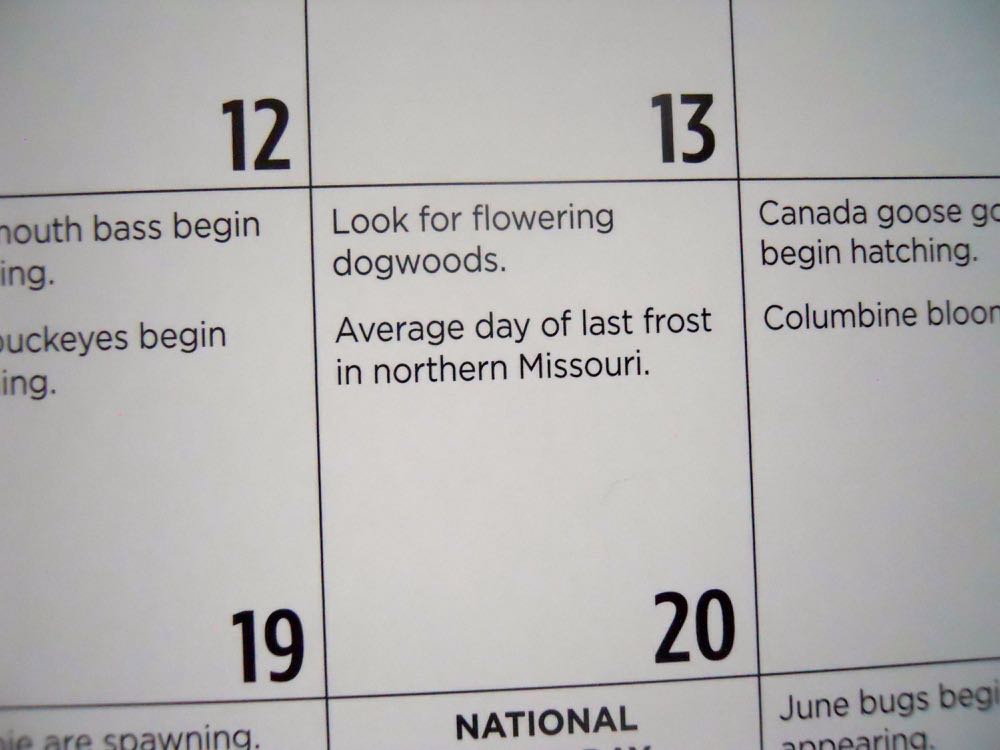Watch Cues in Nature
/These are some of the natural events that usually occur in Missouri in January.
Watch Cues in Nature
If you take one of my beginning beekeeping classes, part of your starter kit will include a Missouri Department of Conservation calendar. That's because watching cues in nature is an important part of being a successful beekeeper.
Watching nature, also called phenology, is tracking what is happening in nature. There are a number of reasons why people pay attention to nature's calendar. According to the National Phenology Network, everything is connected.
"Many birds time their nesting so that eggs hatch when insects are available to feed nestlings. Likewise, insect emergence is often synchronized with leaf out in host plants. For people, earlier flowering means earlier allergies. Farmers and gardeners need to know the schedule of plant and insect development to decide when to apply fertilizers and pesticides and when to plant to avoid frosts. Phenology influences the abundance and distribution of organisms, ecosystem services, food webs, and global cycles of water and carbon. In turn, phenology may be altered by changes in temperature and precipitation.
"Changes in phenological events like flowering and animal migration are among the most sensitive biological responses to climate change. Across the world, many spring events are occurring earlier—and fall events are happening later—than they did in the past. However, not all species are changing at the same rate or direction, leading to mismatches. How plants and animals respond can help us predict whether their populations will grow or shrink – making phenology a “leading indicator” of climate change impacts."
On a much, much smaller scale, I have watched nature in my one-acre Missouri hillside garden since I moved here in the 1980s. My first entry in my garden diary was a notation about raccoons and wild turkeys. The other early notations marked when wildflowers were blooming, an important fact for tracking bee food sources.
Since then, my garden has become a certified wildlife garden and Monarch Way station. My neighbors call it "daffodiland" and I worry when I don't see something in, or on, my flowers. I often wonder about people who say gardens are calm and peaceful, mine seems to be teeming with activity.
Missouri Department of Conservation's Natural Events Calendar gives you a peek at what should be happening in your garden, noting every month what wildflowers should be blooming, for example. Here's an example for April 2018:
Missouri Department of Conservation's Natural Event calendar includes wildflowers in bloom.
The other handy reference in this calendar is when average frost starts and ends, as well as what trees should be in bloom. Trees are now another important source of pollen for honeybees.
Missouri Department of Conservation Natural Events calendar includes daily event listings.
The daily listings also making watching nature easier, especially if this is a new practice for you. In addition to when trees and flowers are blooming, the calendar notes other important developments: when June bugs begin appearing, when hummingbirds migrate, when chiggers start biting.
It's an excellent resource and customized to our state conditions.
Gorgeous photography is another wonderful element of these lovely $10 calendars.
In addition, this $10 calendar has wonderful photos from Missouri Department of Conservation's award-winning photographers. You may have seen some of these photos in Missouri Department of Conservation's free monthly magazine.
What, a wild turkey swimming??
And, on the backside of the calendar, there is usually an unusual event featured. This picture of a wild turkey swimming immediately caught my eye because I know from watching these lovely wild birds, they don't like to swim.
I have my Natural Events Calendar hanging in my kitchen. I use it to add reminders of when I should be doing things in my apiary, and as a reminder to add notations to my regular beekeeping and garden diaries.
Charlotte
















